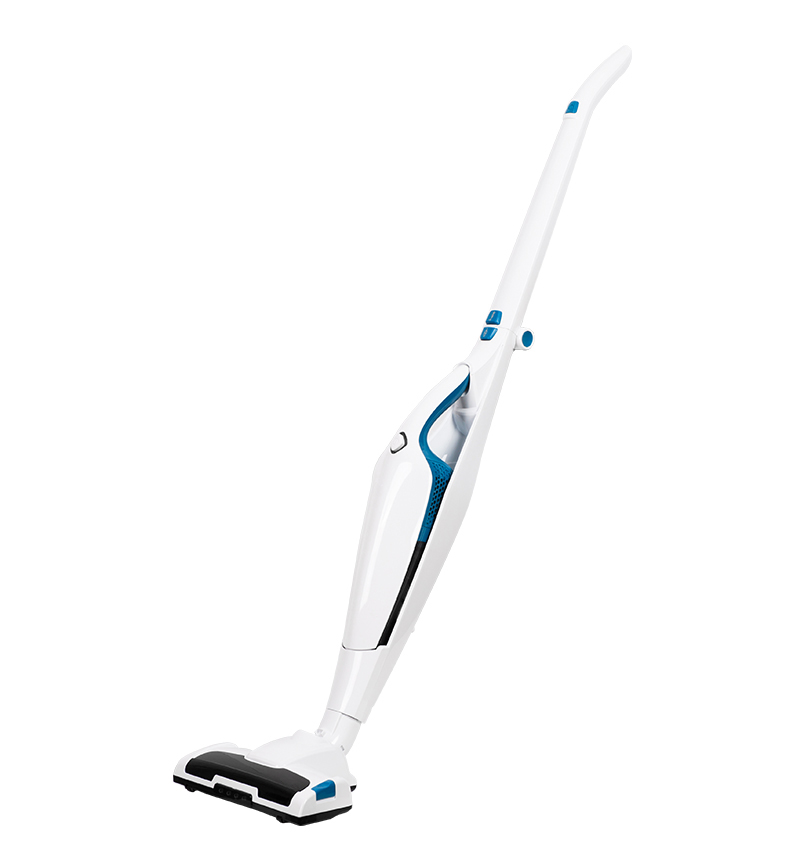Cordless vacuum cleaners have revolutionized home cleaning, offering unparalleled convenience, portability, and efficiency. Freed from the constraints of power cords, these devices leverage advanced battery technology, lightweight design, and smart features to meet the demands of modern households. This article explores the engineering principles, technological advancements, and environmental considerations behind cordless vacuum cleaners, while highlighting their transformative impact on everyday cleaning routines.
1. The Evolution of Cordless Vacuum Cleaners: From Niche to Mainstream
Cordless vacuum cleaners emerged in the early 2000s as a niche product but have since become a household staple. Their rise is attributed to:
Battery advancements: Lithium-ion batteries replaced bulkier, less efficient nickel-cadmium (NiCad) and nickel-metal hydride (NiMH) batteries, offering higher energy density, longer runtimes, and faster charging.
Compact design: Lightweight materials like carbon fiber and high-strength plastics reduce weight without compromising durability.
Consumer demand: Busy lifestyles and smaller living spaces increased the need for portable, easy-to-use cleaning solutions.
2. Core Components: Engineering a Cordless Vacuum
A cordless vacuum cleaner is a marvel of modern engineering, integrating several key components:
Motor: High-efficiency brushless DC motors generate strong suction while minimizing noise and energy consumption.
Battery: Lithium-ion cells provide 20–60 minutes of runtime, depending on power settings. Some models feature removable, swappable batteries for extended use.
Filtration system: Multi-stage filtration, including cyclonic separation and HEPA filters, captures dust, allergens, and micro-particles.
Dustbin: Bagless designs with easy-emptying mechanisms enhance user convenience.
Attachments: Motorized brush rolls, crevice tools, and upholstery brushes adapt the vacuum to various surfaces and tasks.
3. Battery Technology: The Heart of Cordless Performance
Lithium-ion batteries are the backbone of cordless vacuum cleaners, offering:
High energy density: Stores more power in a smaller, lighter package.
Fast charging: Recharges in 2–4 hours, with some models offering quick-charge options for 15–30 minutes of runtime.
Long lifespan: Retains 80% capacity after 300–500 charge cycles, depending on usage and maintenance.
Emerging technologies like solid-state batteries promise even greater energy efficiency and safety in the future.
4. Filtration Systems: Ensuring Clean Air and Allergen Control
Cordless vacuums prioritize air quality through advanced filtration:
Cyclonic separation: Spins air at high speeds to separate dust and debris, reducing filter clogging.
HEPA filters: Captures 99.97% of particles as small as 0.3 microns, including pollen, pet dander, and mold spores.
Washable filters: Reusable components reduce waste and long-term costs.

5. Smart Features: Enhancing User Experience
Modern cordless vacuums integrate smart technologies for added convenience:
Digital displays: Show battery life, suction power, and maintenance alerts.
App connectivity: Allows remote control, usage tracking, and firmware updates.
Auto-adjust suction: Sensors detect surface type and adjust power accordingly.
LED lights: Illuminate dark corners and under furniture for thorough cleaning.
6. Applications: Versatility Across Environments
Cordless vacuums excel in diverse settings:
Home cleaning: Ideal for quick cleanups, stairs, and hard-to-reach areas.
Pet owners: Specialized attachments remove pet hair from carpets and furniture.
Car interiors: Compact design and portability make them perfect for vehicle cleaning.
Commercial use: Lightweight models are popular in offices and small businesses.
7. Sustainability: Balancing Convenience and Environmental Impact
While cordless vacuums reduce energy consumption compared to corded models, their environmental footprint includes:
Battery disposal: Lithium-ion batteries require proper recycling to prevent toxic waste.
Plastic use: Many models rely on non-biodegradable plastics, though some brands now use recycled materials.
Energy efficiency: Advances in motor and battery technology minimize power usage.
Sustainable innovations include:
Recyclable components: Modular designs facilitate repair and recycling.
Solar charging: Experimental models integrate solar panels for eco-friendly power.
Biodegradable materials: Research into plant-based plastics and composites.
8. Challenges and Future Trends
Battery limitations: Despite improvements, runtime and lifespan remain concerns for heavy users.
Cost: High-end models can be expensive, though prices are decreasing as technology matures.
Noise levels: Quieter operation is a focus for future designs.
Emerging trends include:
AI integration: Smart sensors and machine learning optimize cleaning paths and suction power.
Self-emptying bins: Automatically transfer debris to a larger container, reducing manual intervention.
Robotic cordless vacuums: Combining cordless portability with autonomous cleaning capabilities.


 中文简体
中文简体

















